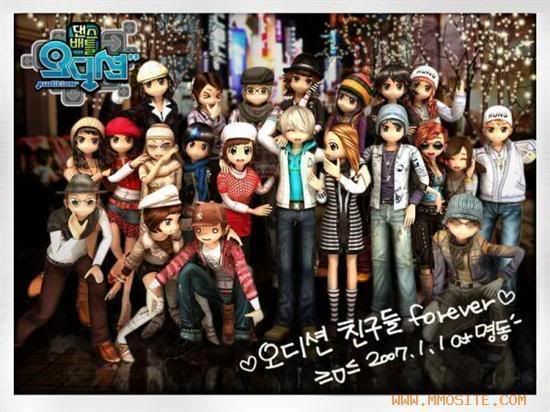Christmas (IPA: /krɪsməs/), also referred to as Christmas Day or Christmastide, is an annual holiday celebrated on December 25[2] that marks and honors the birth of Jesus of Nazareth.[3][4][5] His birth, which is the basis for the Anno Domini system of dating, has been determined by modern historians as having occurred between 7 and 2 BC. The date of celebration is not thought to be Jesus' actual date of birth, and may have been chosen to coincide with ancient Roman solar festivals that were held on December 25.[6]
Modern customs of the holiday include gift-giving, church celebrations, and the display of various decorations—including the Christmas tree, lights, mistletoe, nativity scenes and holly. Santa Claus (also referred to as Father Christmas, although the two figures have different origins) is a popular mythological figure often associated with bringing gifts at Christmas. Santa is generally believed to be the result of a syncretization between St. Nicholas of Myra and elements from pagan Nordic and Christian mythology, and his modern appearance is believed to have originated in 19th century media.
Christmas is celebrated throughout the Christian population, but is also celebrated by many non-Christians as a secular, cultural festival. The holiday is widely celebrated around the world, including in the United States, where it is celebrated by 96% of the population.[7] Because gift-giving and several other aspects of the holiday involve heightened economic activity among both Christians and non-Christians, Christmas has become a major event for many retailers.
Christmas Eve, December 24, is the day before Christmas Day, the celebrated birthday of Jesus Christ.
Gift Giving
It is also seen as the night when Santa Claus or his international variants make their rounds giving gifts to good children. In the Czech Republic and Hungary, where St. Nicholas (sveti Mikuláš) gives his sweet gifts on December 6, the Christmas gift-giver is the Child Jesus (Ježíšek in Czech and Jézuska in Hungarian), also known to most as Christkind. In Sweden, Denmark, Germany, Hungary, Norway, Iceland, Argentina, Poland, Portugal and Quebec, Christmas presents are opened mostly on the evening of the 24th, while in Italy, the United States, the United Kingdom, Ireland, English Canada, South Africa, and Australia mostly on the morning of Christmas Day. In Finland Joulupukki personally meets children and gives presents in the evening of Christmas Eve. In most parts of Germany, Austria, and Switzerland Christmas presents are opened in the evening of December 24th ('Bescherung') and are brought by Christkind or Christchild, who leaves the gifts but is never seen doing so. In Spain gifts are traditionally opened on the morning of January 6, Epiphany day ("Día de Los Tres Reyes Magos"), though in some other countries, like Argentina and Uruguay people received presents both around Christmas and on the morning of Epiphany day; there are also some countries, like the rest of Latin America, where people stay awake until midnight, when they open the presents.
Regional Traditions
Philippines
Further information: Christmas in the Philippines
In the Philippines, the predominantly Roman Catholic Christian country in Asia, Christmas Eve is usually celebrated by attending the "Rooster's Mass or Misa del Gallo which is celebrated hours before the clock ticks 12 A.M. signifying the arrival of Christmas Day. After attending church, Filipino families usually hold a feast named Noche Buena to celebrate the birth of Jesus Christ. A great variety of food is eaten during this feast, an event that usually is done with great preparation. Foods being prepared include the famous lechón, quezo de bola, jamón (Christmas ham), roast chicken (turkey did not gain much popularity in the Philippines), barbecued meats, pancit, among many others. Despite the fact that some families are poor, they still find a way to commemorate the birth of Jesus Christ through eating, family time and merry-making.
Santa Claus, also known as Saint Nicholas, Father Christmas, Kris Kringle, or simply "Santa", is the figure who, in Western cultures, is described as bringing gifts on Christmas Eve, December 24[1] or on his Feast Day, December 6.[2] The legend may have its basis in hagiographical tales concerning the historical figure of Saint Nicholas.
The modern depiction of Santa Claus as a fat, jolly man (or gnome) wearing a red coat and trousers with white cuffs and collar, and black leather belt and boots, became popular in the United States in the 19th century due to the significant influence of caricaturist and political cartoonist Thomas Nast.[3] This image has been maintained and reinforced through song, radio, television, and films. In the United Kingdom and Europe, his depiction is often identical to the American Santa, but he is commonly called Father Christmas.
One legend associated with Santa says that he lives in the far north, in a land of perpetual snow. The American version of Santa Claus lives at the North Pole, while Father Christmas is said to reside in Lapland. Other details include: that he is married and lives with Mrs. Claus; that he makes a list of children throughout the world, categorizing them according to their behavior; that he delivers presents, including toys, candy, and other presents to all of the good boys and girls in the world, and sometimes coal or sticks to the naughty children, in one night; and that he accomplishes this feat with the aid of magical elves who make the toys, and eight or nine flying reindeer who pull his sleigh.[4][5]
There has long been opposition to teaching children to believe in Santa Claus. Some Christians say the Santa tradition detracts from the religious origins and purpose of Christmas. Other critics feel that Santa Claus is an elaborate lie, and that it is unethical for parents to teach their children to believe in his existence.[6] Still others oppose Santa Claus as a symbol of the commercialization of the Christmas holiday, or as an intrusion upon their own national traditions.[7]
*Extracted from Wikipedia
::: Song of the Week :::
Subscribe to:
Post Comments (Atom)





































No comments:
Post a Comment